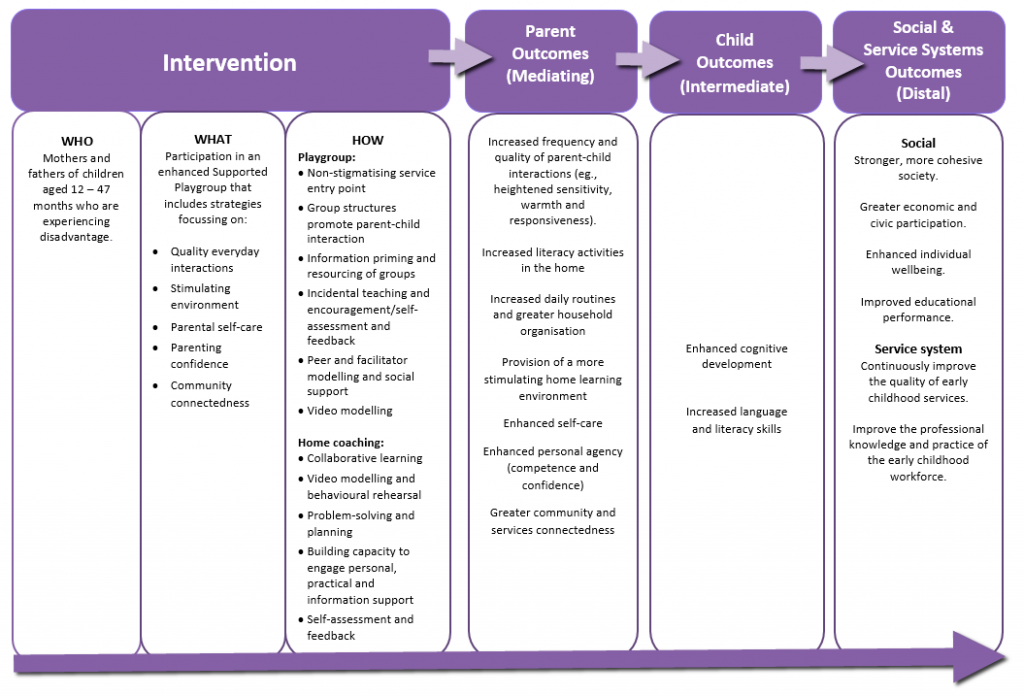The program logic model presented below illustrates the smalltalk intervention, identifies the different levels of desired outcomes, and specifies the relationships between the different parts of the intervention.
Click on image to enlarge.
Parent outcomes (mediating)
The parent outcomes (mediating) are included in this model as the measurable impacts of smalltalk. By measuring these outcomes, we can assess the extent to which we are meeting the outcomes of smalltalk. The outcomes listed here relate to the distal outcomes, as key mediating variables. This means that positive changes in these proximal outcomes will be how we are meeting the broad program outcomes. For instance, the proximal outcome, ‘increased literacy activities in the home’ relates directly to the intermediate outcome ‘increased language and literacy skills’. The proximal outcome, ‘a more stimulating home learning environment’ is a mediating factor that influences both of the intermediate outcomes, ‘enhanced cognitive development’ and ‘increased language and literacy skills’. As noted above, these in turn, relate to the more distal outcomes of ‘improved educational performance’ and ‘greater economic and civic participation’.
We influence these more proximal outcomes through faithful and effective delivery of the intervention – smalltalk. In this model, we suggest that if we deliver smalltalk as it is designed to be – the How – it would achieve these outcomes.
Child outcomes (intermediate)
The intermediate outcomes, those related to the children, are those that we anticipate will change as a function of the mediating or parent outcomes of smalltalk. For example, we anticipate positive educational and developmental outcomes, such as enhanced cognitive development and improved language and literacy skills, will occur for those children whose parents demonstrate changes in attitudes, knowledge, and behaviour because of their participation in smalltalk.
Social and service system outcomes (distal)
The distal outcomes, those focused on the social and service system, are the broad, intended outcomes of smalltalk that we suggest will be impacted by the short-term outcomes that smalltalk achieves. These distal outcomes relate to the program in terms of improved educational engagement and performance of the children and a target group more connected to and engaged in their community. We expect these outcomes to occur because of improved participant outcomes (both intermediate and mediating). These are achieved in combination with sufficient provision of, or access to, smalltalk in the community so that it is able to reach a sizable proportion of families who would benefit.



